
| Home > Preschool > Emerging Literacy |
 |
|
| Home > Preschool > Emerging Literacy |
Children progress through developmental
stages as they learn to read and write. The experimentation and self
correction of this process is one of the most important children will undertake
because reading and writing are the two most crucial skills they will learn
in school. The following are writing examples of EIS preschool children.
They represent examples of all the stages that children go through as they
learn to read and write. Although much of what you see may seem 'incorrect'
to the adult eye, it is critical that young children go through these evolutionary
stages of writing. Just as we do not expect a first year medical
student to perform brain surgery, so we do not expect a child in the first
year of school to produce writing that looks like an adult's. Young
children begin to express interest in reading and writing at an early age,
but the actual skills are not refined until well into the primary years.
We need to give our children the opportunity, time and encouragement they
need to internalize the reading and writing process. Let's take a
closer look...
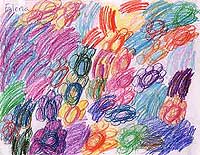 |
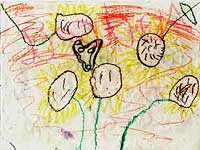 |
|
|
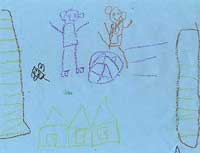 |
This is an example of the second stage of writing: scribble writing. During this phase, children realize that words go across the page in lines and that we read left to right. They begin to realize print carries a message and is the same thing as the spoken word. Children don't form letters as adults know them, but their 'scribbles' are first attempts at re-creating what they see as writing. Children need all our support and enthusiasm as they begin the great writing adventure! |
| This is a super example of the third stage of writing: random letters. This child is really working hard to re-create letters and words that she sees in her environment. She realizes that some words are longer than others and that words and pictures work together to create a book. She recognizes that letters and numbers are different things (see how she groups them separately). She is also connecting her letters at mid line (L,H and R). This skill is a necessary precursor to the next step in writing: invented spelling. |
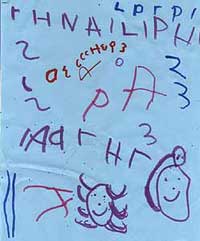 |
 |
Inventive spelling (using beginning consonants to spell words) is a really exciting stage in the writing process. Many skills come together in this phase and children, for the first time, start writing things an adult can 'read'. This is very empowering for young children. If an adult isn't quite sure what the child has written, she may say "Please tell me about what you've written. I see you've worked hard to get it all down!". An adult should never say "This isn't right. Why don't you do it again this way". This is crippling to a child who needs all our support and approval. We do not want our children COPYING something we have written for them. We want the children PRODUCING their own work. This is real life reading and writing. |
| This is the final stage in the process: conventional writing. Three or four years have passed between when a child first picks up a crayon and when they begin to write conventionally. It doesn't mater that there will be words misspelled and letters printed backwards. As a student grows and matures, his skills will refine. He will notice that some things are incorrect and he will want to change them himself. This self correction is more important than any amount of teacher reprimanding to do things the 'right way the first time'. This child is well on his way to being a fluid reader and writer. Congratulations!! | 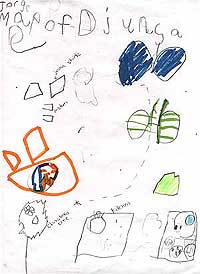 |
|
|